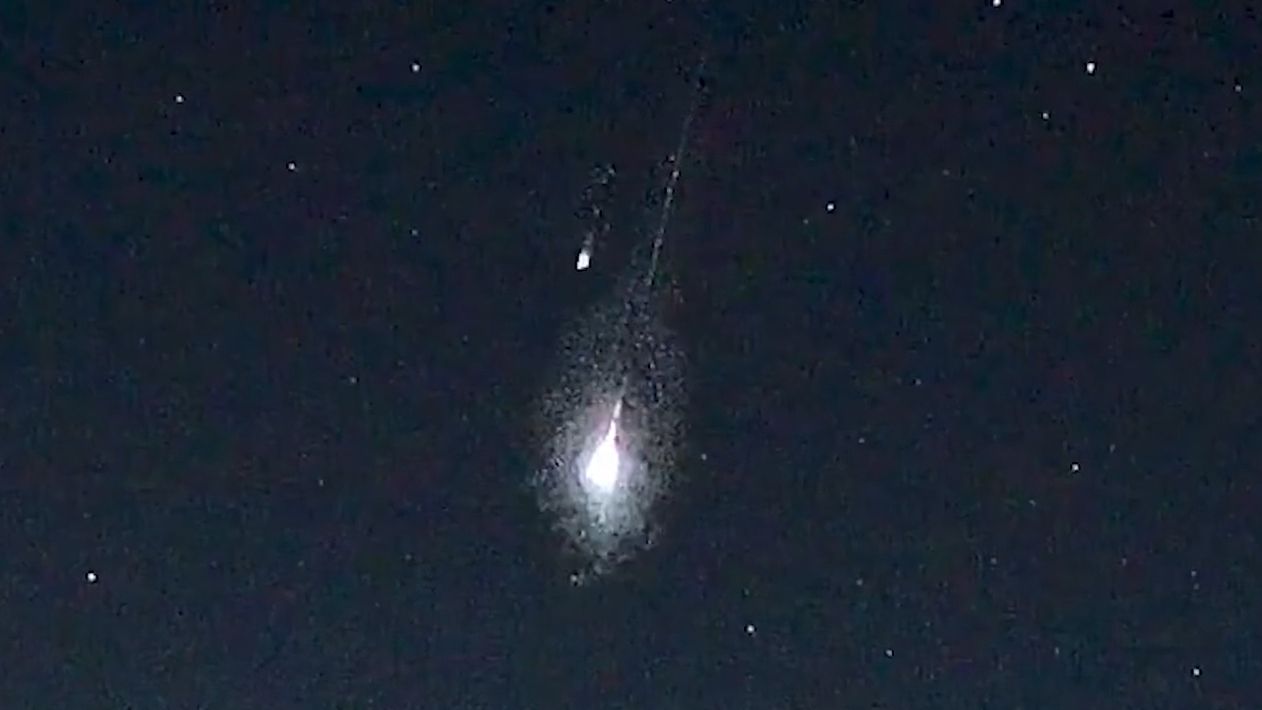☄️ The Mystery of the Double Meteor Solved
Follow us on Google News (click on ☆)
What particularly puzzled experts was the simultaneous appearance of a second meteor perfectly aligned with the main fireball in a video captured from Connecticut. The two objects appeared to move in synchronized formation before vanishing at the same moment, creating the illusion of an extremely rare double event. This phenomenon, observed from another viewing point in the same region, deepened the perplexity of both amateur and professional astronomers regarding this troubling coincidence.

Video sequence showing what appears to be a "double fireball" crossing the Connecticut sky
Credit: © Mark Kirschner
The explanation for these double appearances comes from Robert Lunsford, a recognized expert from the American Meteor Society. In correspondence with the magazine Space.com, he revealed that these double fireballs could be attributed to optical artifacts generated by the camera systems used for sky observation. The transparent acrylic domes protecting the lenses from the elements would create reflections that give the impression of a second meteor accompanying the main phenomenon.
Detailed analysis of the video recordings confirms this hypothesis: the relative position of the second object compared to the main fireball remains identical in all sequences, which perfectly matches the behavior of an optical reflection rather than that of a genuine independent celestial body. This discovery highlights the importance of understanding the technical limitations of observation instruments before drawing hasty conclusions about unusual astronomical phenomena.
For amateur astronomers eager to capture their own observations, this information underscores the need to master the specific characteristics of their equipment. Understanding potential optical artifacts helps avoid misinterpretations while improving the quality of recordings. Astronomy enthusiasts can thus more easily distinguish genuine celestial phenomena from simple illusions created by their equipment.
This case of the double fireballs perfectly illustrates how science advances through meticulous analysis of observations. What might have seemed like an exceptional astronomical discovery ultimately turned out to be a lesson about the interactions between technology and celestial phenomena, reminding us that even the most sophisticated devices can sometimes play tricks on us.
Meteors and Their Characteristic Green Color
The intense green color observed during this phenomenon comes from the interaction between the meteor particles and the molecules in Earth's atmosphere. When a fragment of space matter enters our atmosphere at high speed, friction generates extreme heat that vaporizes its components.
The magnesium and nickel atoms contained in these celestial bodies become excited under the effect of this thermal energy, emitting a characteristic green light when they return to a stable state. This specific luminescence allows scientists to identify the chemical composition of meteors without needing to collect physical samples.
The intensity of the color varies depending on the size of the meteor and its entry speed into the atmosphere. Larger fragments produce brighter colors and more persistent trails, while smaller ones may go almost unnoticed. The dominant green hue generally indicates the significant presence of metals like magnesium in the celestial body's composition.
This luminous property also helps distinguish genuine meteors from artificial space debris, which exhibit different colorimetric signatures due to their specific construction materials.